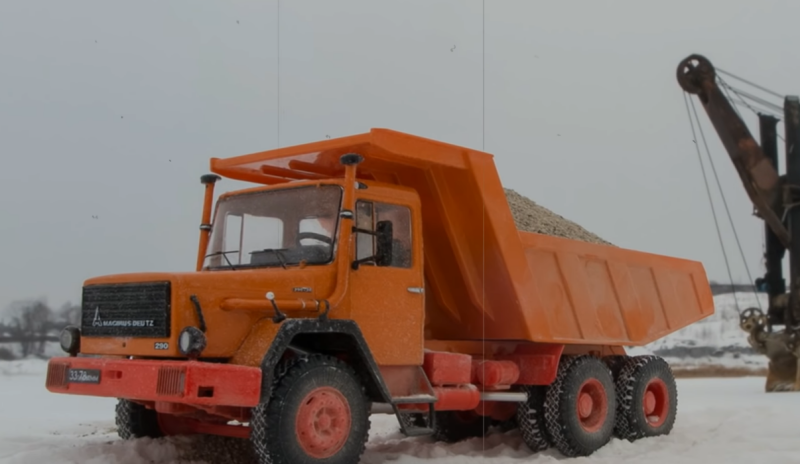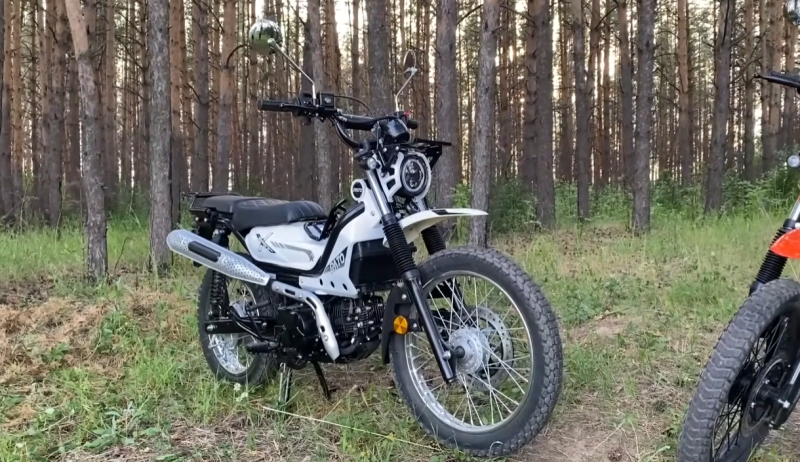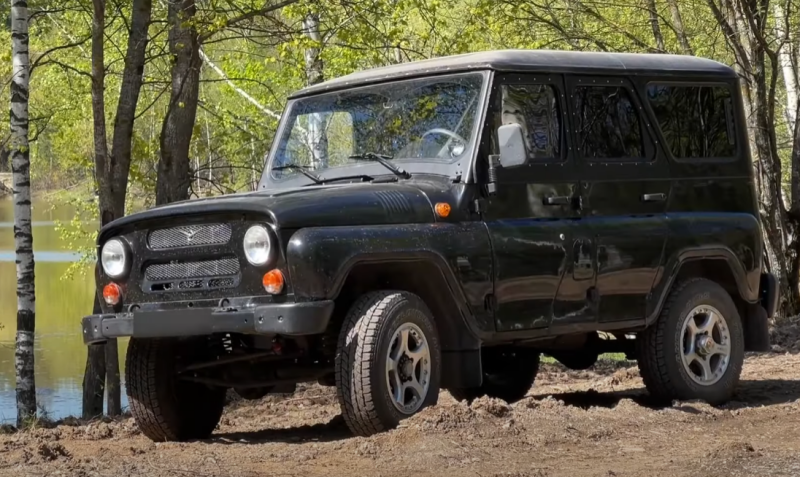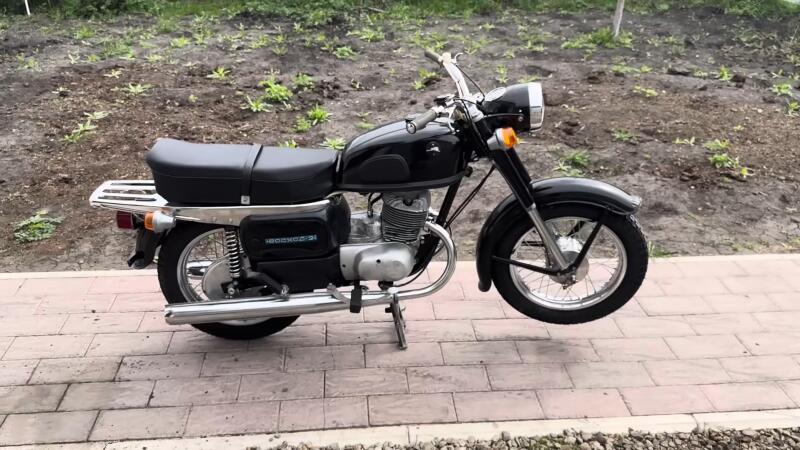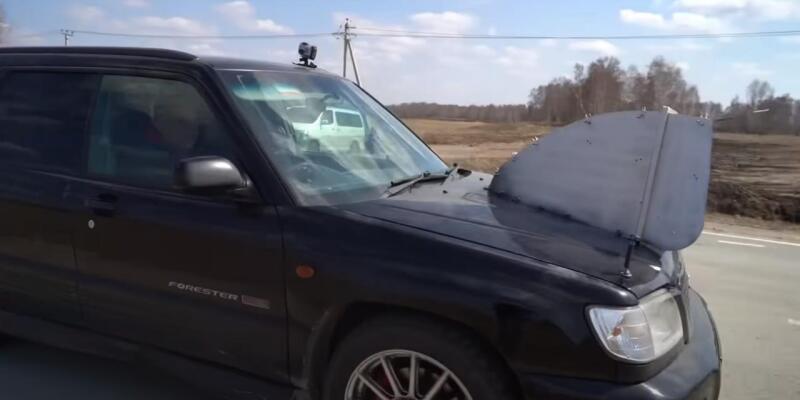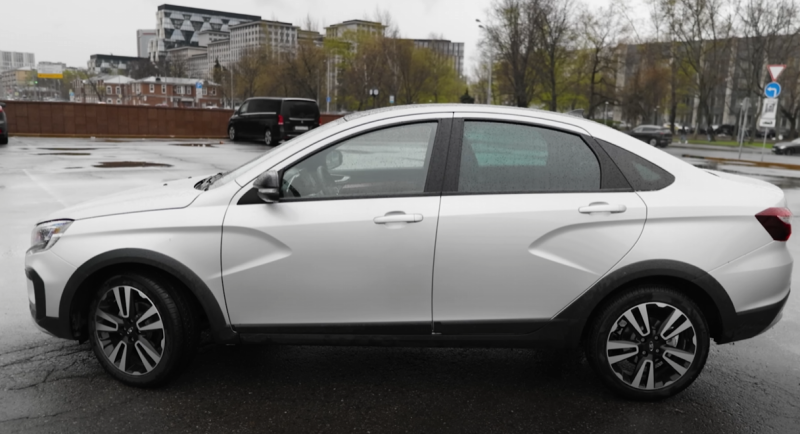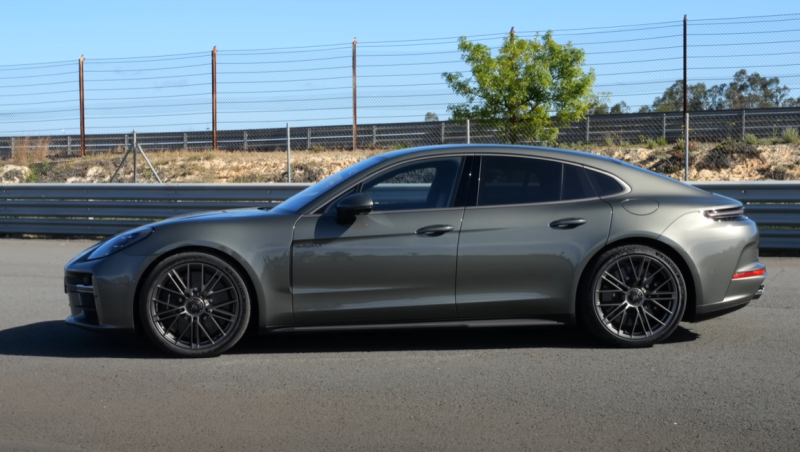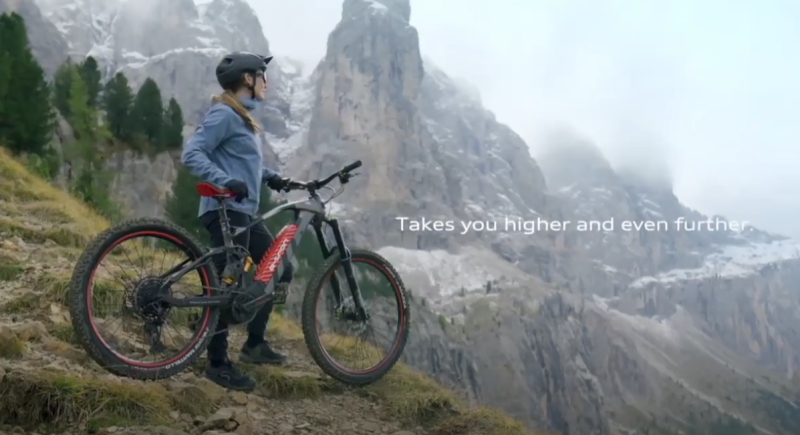We had to buy foreign trucks. Although, it all started, one might say, with an accident. For example, the first dump trucks of the Tatra brand came to the USSR back in 1945, when they were donated to the Red Army. Then these trucks were bought by the Soviet Union for several decades. They worked in Siberia and at the “construction sites of the century”.
Czech dump trucks turned out to be a good acquisition, but they were not enough. I had to be content with trucks of my own production. But when the USSR resumed work on the construction of BAM, in the early 70s, it was decided to purchase a large batch of German trucks.
 Sending trucks to the USSR. Photo: Youtube.com
Sending trucks to the USSR. Photo: Youtube.comFor obvious reasons, a company from the GDR, Magirus-Deutz, became a partner of the Soviet Union. Of course, there were dump trucks that the USSR needed from other manufacturers, such as Daimler-Benz or MAN. But it was a matter of honor to support the communist state of the GDR, especially since things were not going well for Magirus-Deutz in the early 70s.
Why were they hooded?
The German automotive industry already in the late 70s began to abandon bonneted trucks. The reason is simple - such models are more compact, which is important, given the specifics of old European cities and their narrow streets.
Magirus-Deutz tried not to break out of this trend. But due to the peculiarities of the economy, the GDR nevertheless introduced a new generation of heavy bonnet trucks. Officially, this sounded like a concern for conservative clients who prefer the presence of a crumple zone in front. In fact, the construction organizations of the GDR simply did not have the opportunity to buy cars from Germany, especially since there was a factory.
 This is the Ural-IVECO 330.30 ANW, a truck based on the same Magirus-Deutz. Photo: Youtube.com
This is the Ural-IVECO 330.30 ANW, a truck based on the same Magirus-Deutz. Photo: Youtube.comAs for Magirus-Deutz, it is unlikely that this enterprise had the opportunity of a free choice. Remembering how the Soviet auto industry developed, it becomes clear that the emergence of a new generation of bonnet trucks was predetermined. Why change something and invest in new lines, if they buy it anyway for lack of an alternative?
How "Magirus" got to the USSR
In 1974, the Soviet government enters into a contract with Magirus-Deutz for the supply of heavy trucks, primarily dump trucks. The USSR needed such vehicles capable of carrying the maximum weight in one "walk".
The heaviest dump truck in the USSR at that time was the KrAZ-256B. Its carrying capacity was equal to 12 tons, but this was not enough. The alternative was Tatra cars from Czechoslovakia. Their mining dump trucks could take on board up to 15 tons. Only the Czech plant was not able to give the Soviet Union the required number of cars for several years - the production volumes were not the same.
 Truck at work. Photo: Youtube.com
Truck at work. Photo: Youtube.comBut for Magirus-Deutz this order was significant. The USSR bought more than 9 trucks to complete the construction of the Baikal-Amur Mainline.
Models supplied to the Soviet Union:
✅ 290D26K
✅ 290D26L
✅ 232D19K
✅ 232D19L
All trucks with the letter "K" in the index are dump trucks. "L" indicates that this is an on-board modification. The numbers in front of the letter are the total permitted weight.
Most of all, three-axle dump trucks 290D26K were delivered to the USSR. They had a carrying capacity of 16,6 tons, that is, more than that of Tatra, and even more so KrAZ. The need for flatbed trucks was small in the USSR. Two-axle vehicles with a carrying capacity of 10 tons were not particularly required, although they were also bought.
In addition to dump trucks and on-board models, the Soviet Union took truck tractors and auto repair vans in small quantities. The equipment of the latter made it possible to service and repair Magirus-Deutz trucks.
 Onboard two-axle truck. Photo: Youtube.com
Onboard two-axle truck. Photo: Youtube.comAll Magirus-Deutz were distinguished by reliability, efficiency, and carrying capacity. Soviet drivers received an incredible level of comfort for them in any climatic conditions.
Three-axle trucks differed in cross-country ability. Despite the wheel formula 6x4, that is, the drive was not complete, the car had interaxle and interwheel differential locks. Instead of a transfer case for three-axle models, the manufacturer introduced cylindrical gearboxes on intermediate axles.
Of course, the design of Magirus-Deutz trucks was seriously different from what was produced in the USSR. In theory, this was supposed to complicate the repair of these cars. The fact is that Soviet mechanics simply did not know how to service such machines, and air-cooled diesel engines were unknown to them.
 Car depot in the USSR. Photo: Youtube.com
Car depot in the USSR. Photo: Youtube.comBut in practice, it turned out that the Magiruses are distinguished by incredible reliability for the technology of the USSR. They rarely broke. Moreover, some of the cars imported in the second half of the 70s are still on the move.
Cabin and its features
Magirus-Deutz trucks of the 70s are unified with each other. This was necessary to simplify and reduce the cost of production, but not at the expense of quality. Accordingly, the cabins of the Magirus supplied to the USSR were almost identical. The only external difference is the length of the hood. For ten-cylinder three-axle dump trucks and flatbed models, it is 200 mm larger.
 The cabin was spacious, comfortable and warm. Photo: Youtube.com
The cabin was spacious, comfortable and warm. Photo: Youtube.comCabin design is specific - "nosed". If we compare it with something familiar to most Russian drivers, it looks like ZIL-4331. Cabins are triple, spacious, all-metal. Especially for operation in Siberia, cars were carefully glued with noise and thermal insulation.
The glass is triple, the windshield was impressive in size. The driver's seat is ergonomic, adjustable in several directions.
The cab is fixed to the frame using brackets, rubber pads and a support bar. For maximum comfort, it is supported by four hydraulic shock absorbers - two on each side.
Especially for the Soviet Union, trucks received 4 headlights each. There are only two of them as standard. Additional light elements are located in the bumper. The headlights are covered with protective grilles.
Cabin heating is implemented competently, especially for the harsh conditions of Siberia. Two autonomous Webasto heaters are installed there. 2-2,5 liters of fuel in the tank was enough for them for 2-8 hours. The time and intensity of work depended on the outboard temperature. One heater heated the batteries.
Engines
All three-axle trucks were equipped with ten-cylinder diesel engines. Their power is from 290 to 310 hp. With. depending on modification. Passport speed - 73 km / h. But drivers working on these cars claim that they accelerated to 90 km / h on the highway, even loaded.
 Magirus-Deutz engine. Photo: Youtube.com
Magirus-Deutz engine. Photo: Youtube.comTwo-axle Magirus-Deutz were equipped with eight-cylinder engines. Their power ranges from 210 to 248 hp. With.
All Magirus-Deutz engines were economical and highly reliable. They are specially modified for operation in Siberian conditions.
Drivers who worked on the BAM construction and fields said that they often did not even change clothes before work, remaining clean at the end of the shift.
If you collect all the reviews about Magirus-Deutz trucks, you can say with confidence that this is the best dump truck that worked in the USSR.
